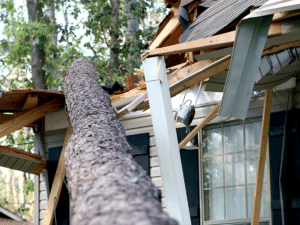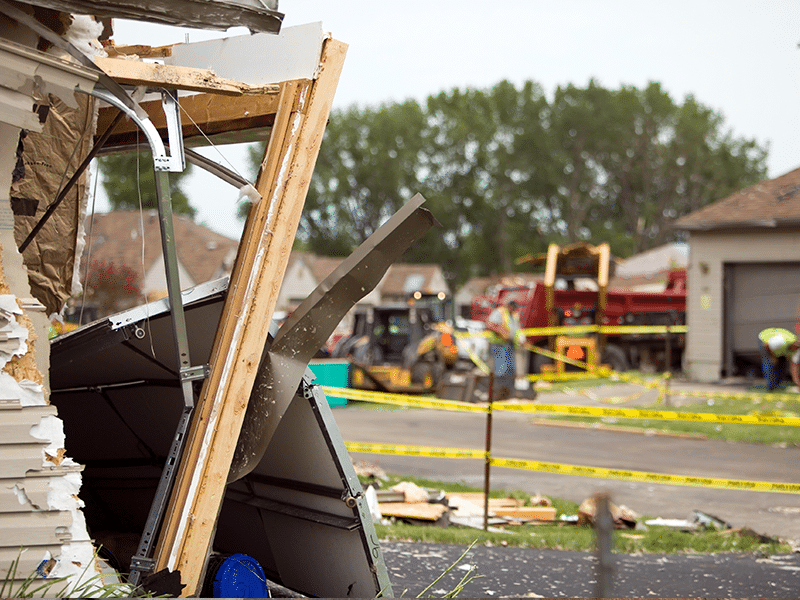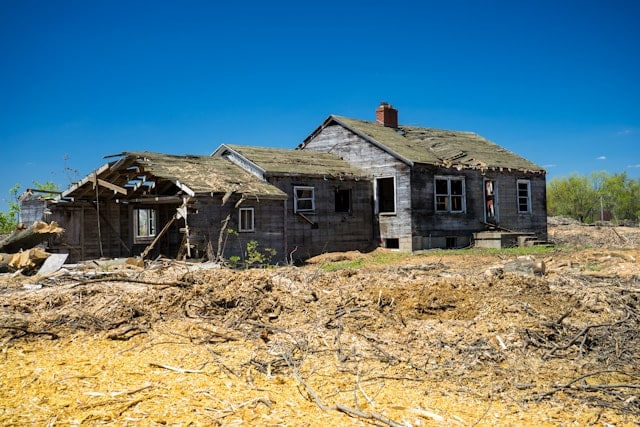Anticipating Storm Damage
No one likes thinking about the worst case scenario, but with inclement weather increasing exponentially, flood and storm damage is something we all need to consider. Whether you prefer to prepare preemptively, or study up on the best post-storm steps to take, it’s imperative to have a plan in place. Check out this breakdown of the different types of storm damage and the best ways to recover
Types of Storm Damage
There are five main types of damage caused by storms that can occur independently or collectively — with some exacerbating others — across all regions of the United States. It’s sad to say, but nowhere is safe from severe storm systems.

Water and Flood Damage
There are a number of ways to incur water damage from a storm, most commonly from flooding due to excessive rainfall. Severe flooding may cause a home to be uninhabitable for up to a year. After water removal, an assessment of the aftermath and an inventory of flood-damaged items must be taken before the long process of drying, reclamation, and restoration can begin.
Wind Damage
Tornadoes, hurricanes, and straight-line winds from severe thunderstorms are the big three causes of wind damage. Damage from direct wind speed and debris can shatter windows, destroy roofs, and compromise the structural integrity of a home. If the damaging wind is accompanied by heavy rain — as it often is — the potential for water damage increases.
Impact Damage
This type of damage occurs when trees and other debris strike your structure. The elements often work in concert to create conditions of increased edifice defacement. Excessive rainfall can significantly weaken the soil surrounding trees, allowing high-speed winds to easily topple a tall pine into your walls, windows, or roof. Likewise, strong winds flinging high-speed debris can render your interior exposed to the elements, increasing the possibility of water damage and need for water removal.
Hail Damage
The size of these ballistic balls of ice can vary between pearl and grapefruit while their damage spans the spectrum of superficial to significant. Hailstones can often be dense and momentous enough to fracture vinyl siding and even blast through a roof, leaving your domicile vulnerable to further storm damage.
Lightning Damage
There is a shocking 1 in 200 chance of your home being struck by lighting. It can enter your home through pipes, wires and even the metal rebar in concrete. While the most likely storm damage caused by lightning is fire, the impact from a lightning strike can break glass and fracture foundations.
How to Recover from Flood and Storm Damage
Being significantly affected by flood and storm damage can be financially and emotionally devastating. If you ever find yourself at the mercy of Mother Nature, don’t panic. Contact the experts, evaluate the damage, and let the healing process begin.
Excellent round-the-clock water restoration services like 24hr Flood Pros can immediately assist you in your time of need. With an immediate response time and a scalable team of highly-skilled experts, widespread storm damage is easily managed. Their precise strategies of preparation and repair differentiate the types of flood and storm damage to best assess your damage situation and restore your normal life in no time.




